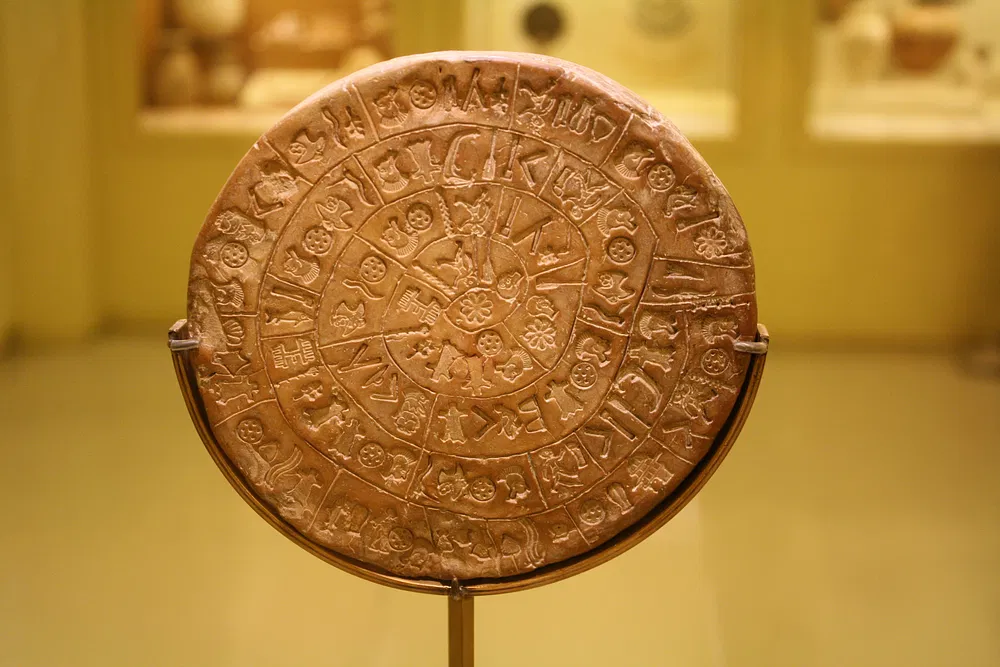The Phaistos Disc remains one of archaeology’s most perplexing enigmas. Discovered in 1908 at the Minoan palace of Phaistos on the island of Crete, this clay disc, dating to around 1700 BCE, is inscribed with a series of intricate symbols arranged in a spiraling sequence. Despite over a century of study, its language and meaning remain undeciphered, fueling speculation and debate among scholars.
Discovery and Characteristics
Italian archaeologist Luigi Pernier unearthed the disc during excavations at Phaistos. Made of fired clay, it measures approximately 16 centimeters in diameter and features 242 stamped symbols, divided into 61 groups. These pictograms include human figures, animals, tools, and abstract shapes, arranged in a continuous spiral that suggests a structured message or record.
Theories on Its Language and Meaning
Linguists and archaeologists have proposed numerous theories regarding the symbols on the disc. Some believe it represents an early form of writing related to Linear A, the script of the Minoans, while others argue it may be a unique syllabic script unrelated to known languages. Attempts at decipherment have suggested possible connections to religious hymns, ritual texts, or administrative records.
Purpose in Minoan Culture
The function of the Phaistos Disc is a subject of ongoing debate. Some scholars suggest it was used for ceremonial or religious purposes, possibly as a sacred text or chant. Others believe it could have been an educational tool, a game, or even an early form of movable type. The presence of repeated symbols indicates a structured composition, reinforcing the idea that it carried significant meaning in Minoan society.
Archaeological and Cultural Significance
As one of the few surviving artifacts of its kind, the Phaistos Disc provides valuable insight into Minoan civilization. Its mysterious script and intricate design highlight the complexity of early Mediterranean cultures. However, without further discoveries to provide context, its true meaning remains elusive.
Conclusion
The Phaistos Disc continues to captivate historians and linguists, serving as a reminder of the many mysteries that ancient civilizations have left behind. Whether it holds the key to understanding Minoan language or serves another unknown purpose, its secrets endure as a challenge to scholars worldwide.







